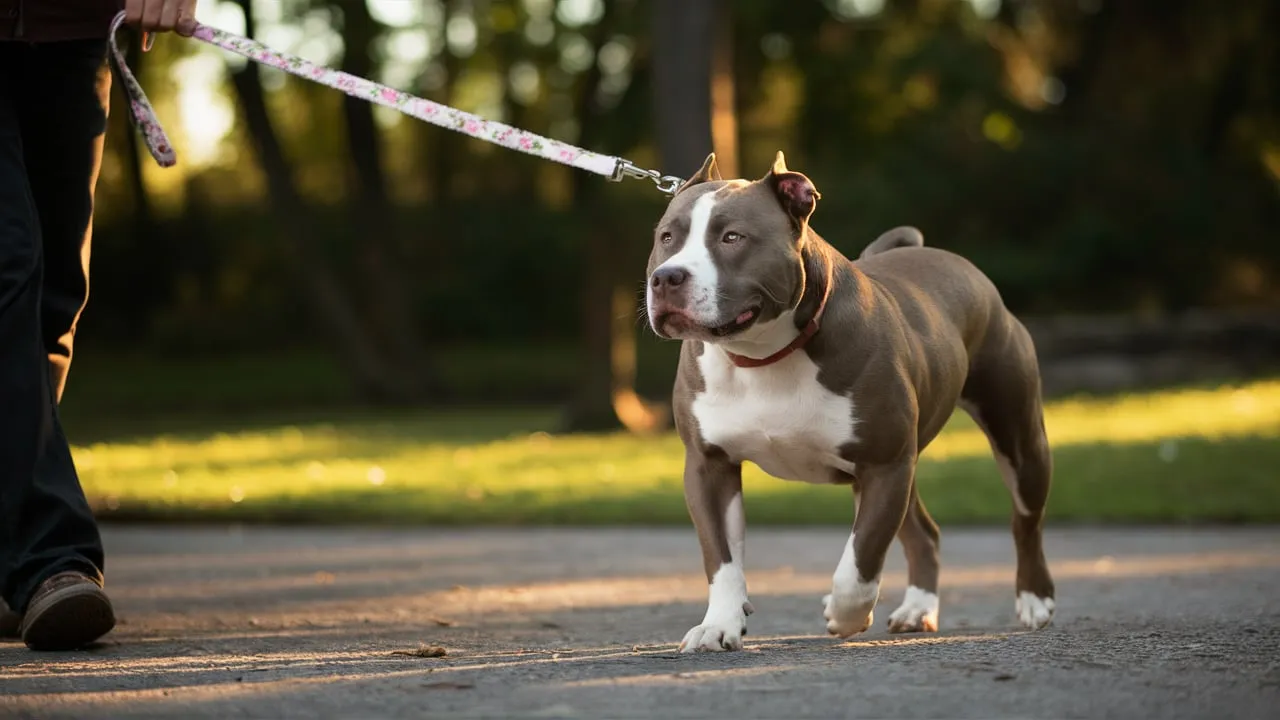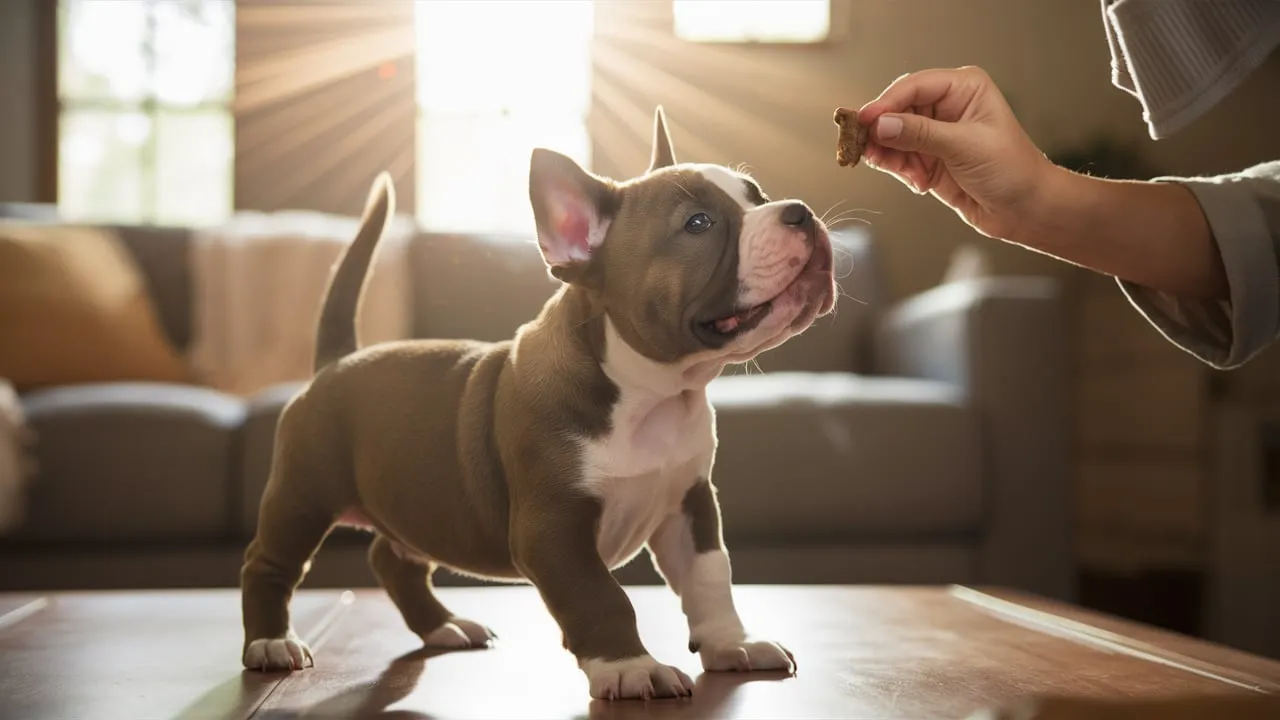Learn How To Train A Pitbull effectively using positive reinforcement techniques. Discover tips for socialization, obedience training, and managing common behavioral challenges by Dogs Infor
Understanding the Pitbull Breed
History and Temperament
Pitbulls have a rich history that dates back to the 19th century, originating in England, Scotland, and Ireland. They were initially bred for bull-baiting and later as farm dogs.
Despite their historical use in fighting, pitbulls are known for their loyalty, intelligence, and affectionate nature towards humans. They can be excellent family pets when raised in a loving environment, showcasing their friendly and playful temperament.
Common Misconceptions
There are many misconceptions about pitbulls, often labeling them as inherently aggressive or dangerous. These stereotypes are largely unfounded and stem from their past use in dog fighting and sensationalized media reports.
In reality, pitbulls, like any other breed, reflect the training and treatment they receive from their owners. Understanding and dispelling these myths can help promote a more accurate and positive image of the breed.
Importance of Early Socialization
Early socialization is crucial for pitbulls to ensure they grow up to be well-adjusted and sociable dogs. Introducing them to a variety of people, animals, and environments from a young age helps prevent behavioral issues and promotes a more balanced temperament.
Training and positive reinforcement are key components in raising a well-behaved pitbull, highlighting the importance of responsible ownership and proactive socialization.

Positive Reinforcement Training
Positive reinforcement training is a humane and effective method for training dogs of all breeds, including Pitbulls. It focuses on rewarding desired behaviors with positive reinforcement, such as treats, praise, or toys, to encourage repetition and learning.
Basic Obedience Commands (Sit, Stay, Come)
- Sit: Hold a treat near your dog’s nose and slowly move it over their head, encouraging them to sit. Once they sit, give them the treat and praise.
- Stay: Once your dog is sitting, say “Stay” and hold your hand out in front of them. If they stay, give them a treat and praise. Gradually increase the duration of the stay.
- Come: Call your dog’s name and say “Come” while holding a treat. When they come to you, give them the treat and praise. Repeat this exercise in different environments.
Leash Training
- Introduce the Leash Gradually: Let your puppy sniff and explore the leash before attaching it.
- Start with Short Walks: Begin with short walks in a quiet area, gradually increasing the distance and duration.
- Positive Reinforcement: Reward your dog for walking calmly beside you with treats and praise.
Potty Training
- Establish a Routine: Take your puppy out to potty frequently, especially after waking up, eating, and playing.
- Reward Success: When your puppy eliminates outside, give them a treat and praise.
- Clean Up Accidents: Clean up accidents immediately with an enzymatic cleaner to remove the scent and prevent your puppy from going to the same spot again.
Building a Strong Bond
- Consistent Training: Train your dog regularly and consistently to reinforce their learning and build a strong bond.
- Playtime and Affection: Spend quality time with your dog through playtime, cuddling, and other activities they enjoy.
- Respect and Trust: Treat your dog with respect and kindness, and build trust through positive interactions.

Addressing Common Pitbull Behavior Challenges
While Pitbulls are known for their loving and playful nature, they can sometimes exhibit challenging behaviors. Here’s how to address some common issues:
Aggression
- Identify the Cause: Aggression can stem from various factors, including fear, territoriality, resource guarding, or lack of socialization.
- Professional Help: If you suspect aggression, seek professional help from a certified dog trainer or behaviorist.
- Positive Reinforcement Training: Focus on positive reinforcement techniques to teach your dog appropriate behaviors and reduce anxiety.
- Avoid Triggers: Identify and avoid triggers that might provoke aggression, such as other dogs, strangers, or certain objects.
Fear and Anxiety
- Desensitization: Gradually expose your dog to feared stimuli in a controlled and positive environment.
- Counter-Conditioning: Pair feared stimuli with positive experiences, such as treats or praise, to create a positive association.
- Calming Techniques: Use calming aids like pheromone diffusers, calming chews, or relaxation techniques.
- Professional Help: If anxiety is severe or persistent, seek professional help from a veterinarian or behaviorist.
Jumping and Nipping
- Redirect Behavior: When your dog jumps or nips, redirect their attention to a toy or treat.
Ignore Inappropriate Behavior: Avoid giving attention to unwanted behaviors, as it can reinforce them. - Training and Consistency: Use positive reinforcement training to teach your dog alternative behaviors, such as sitting or staying.
- Socialization: Socialize your dog with other dogs and people to help them learn appropriate social skills.
Lời kết
Pitbulls are intelligent, athletic, and can be loving companions, but their history and potential for misinterpretation require responsible ownership. Start training your Pitbull puppy early and consistently using positive reinforcement methods to build a strong bond and teach them appropriate behaviors.
If you encounter behavioral challenges, don’t hesitate to seek professional help from a certified dog trainer or behaviorist. With the right guidance and dedication, you can ensure that your Pitbull thrives as a happy, healthy, and well-behaved member of your family.

Related Post
Training Golden Retriever: A Step-by-Step Guide
Dog Training Commands: The Guide To A Well-Behaved Pup